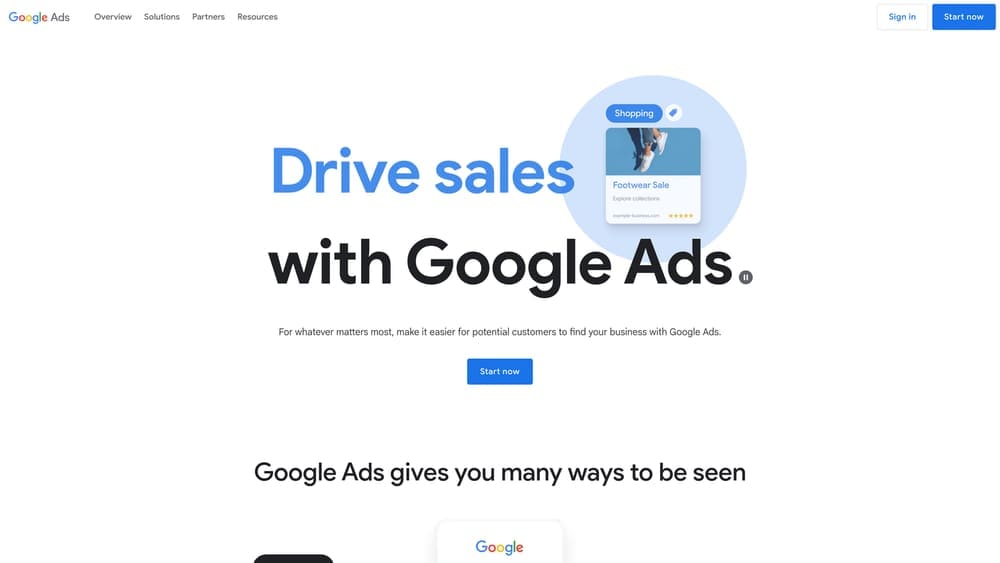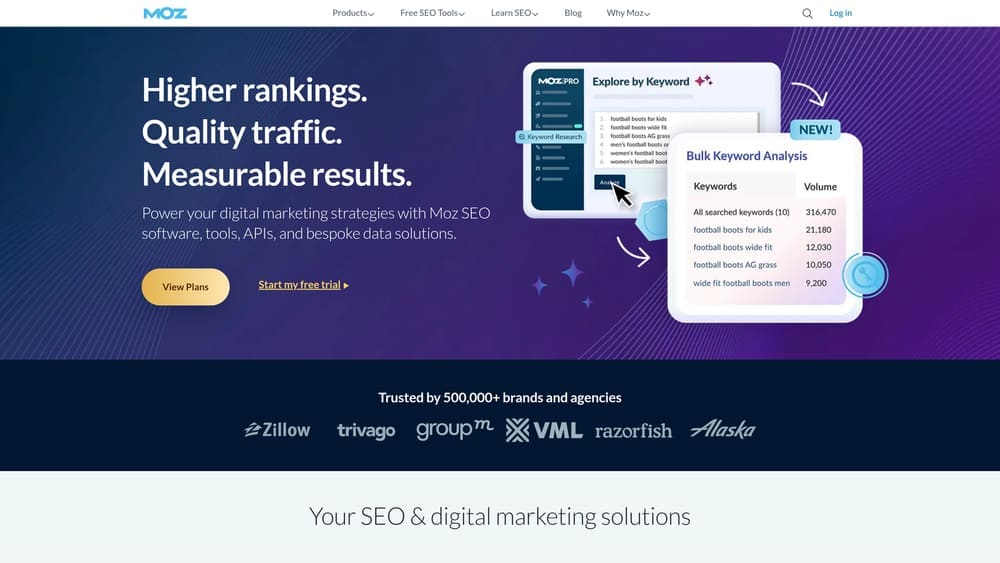campaign
creatives
Top 9 Insights On Comparison Of PPC Vs SEO For Lead Generation Success
This article provides a clear comparison of PPC vs SEO for lead generation, helping you choose the best strategy for your business.
In today's digital landscape, businesses face a critical decision when it comes to lead generation: should they invest in pay-per-click (PPC) advertising or focus on search engine optimization (SEO)? Both strategies have their merits, yet choosing the right one can feel overwhelming, especially for small business owners juggling multiple marketing options. Imagine a small business owner who has tried both PPC and SEO but struggles to see significant results from either approach. This scenario is all too common. With the right insights, you can understand how to effectively leverage both PPC and SEO to boost your lead generation efforts. By the end of this article, you'll have a clear comparison of PPC vs. SEO for lead generation, enabling you to make informed decisions tailored to your business needs. Let's dive into the top tools that can help you optimize your approach.
1. The Crossroad of Marketing Strategies
Best for: Navigating the complexities of choosing between PPC and SEO.
Many business owners find themselves at a crossroads when deciding how to generate leads effectively. With numerous marketing channels available, it’s easy to feel overwhelmed. For example, a small bakery may initially opt for PPC advertising to attract immediate customers but may later explore SEO strategies to build a long-term online presence. Understanding the nuances of both approaches is crucial for effective lead generation. According to a report by WordStream, PPC leads have a 50% higher conversion rate compared to organic leads, making them attractive for immediate results. However, businesses that invest in SEO can achieve a close rate of 14.6%, significantly higher than traditional outbound marketing methods.
For those seeking to broaden their understanding, exploring various digital marketing strategies can illuminate alternative pathways. The key is to understand how PPC and SEO can complement each other in your marketing mix.
2. What Is PPC?
Best for: Quick lead generation through paid advertising.
Google Ads is an advertising platform that allows businesses to create ads that appear in Google search results and across its advertising network. PPC, or pay-per-click advertising, works on a bidding system where advertisers pay each time a user clicks on their ad. This method can be highly effective for generating immediate traffic and leads.

With PPC, businesses can target specific keywords, demographics, and even geographic locations to reach their ideal audience. For instance, a local restaurant can target ads for "best Italian food in [city]" to attract nearby customers. This model is attractive for businesses aiming for quick returns, as many see results within 24 hours of launching a campaign.
However, the cost of PPC can add up quickly. The average cost per click (CPC) varies by industry but generally hovers around $2.69 across all sectors. While PPC can drive immediate results, it requires sustained investment to maintain visibility and effectiveness.
3. What Is SEO?
Best for: Long-term visibility and sustainable lead generation.
Moz is a leading SEO tool that provides insights into how websites can improve their search engine rankings through various optimization strategies. SEO, or search engine optimization, focuses on enhancing a website's visibility in organic search results. This involves various techniques, including on-page optimization (like keyword research and content creation) and off-page strategies (such as link building).

Many businesses that invest in SEO see gradual, sustainable growth. For example, a small e-commerce site that optimizes its content for relevant keywords may take several months to see a significant increase in organic traffic. However, once established, the benefits of SEO can be profound, as it builds authority and trust over time.
According to HubSpot, businesses that prioritize SEO are 13 times more likely to see a positive ROI. While the initial investment can be significant, with monthly costs ranging from $750 to $2,000 for professional services, the long-term benefits often outweigh the costs.
4. The Cost of Lead Generation: PPC vs. SEO
Best for: Evaluating budgetary needs for effective lead generation.
When it comes to cost, PPC campaigns often require a significant upfront investment, but they can yield quick results. The average CPC across industries is $2.69, and businesses can expect to pay more for highly competitive keywords. For instance, a law firm may spend upwards of $50 per click for keywords like "personal injury lawyer."
In contrast, SEO is typically less expensive in the long run, but it requires patience and consistent effort. SEO services can range from $300 to $10,000+ per month, depending on the complexity of the strategies employed. Companies that invest in SEO typically see an average return of $22 for every $1 spent, making it a worthwhile long-term investment.
For example, a B2B company that invested in SEO over 12 months saw a 150% increase in organic traffic, which ultimately resulted in lower customer acquisition costs when compared to their previous PPC campaigns.
5. Speed of Lead Generation: How Fast Can You See Results?
Best for: Understanding the timelines for lead generation strategies.
PPC is known for its immediacy. Businesses can launch a campaign and start generating leads almost instantly. According to Google, successful PPC campaigns can produce leads within 24 hours of launch. This speed can be crucial for time-sensitive promotions or events.
On the other hand, SEO takes time to build momentum. Many businesses may not see significant results from their SEO efforts for 3 to 6 months. However, the long-term benefits of SEO often lead to sustained traffic growth, with a higher lifetime value for leads generated through organic search.
For example, a local retailer that invested in both PPC and SEO found that while PPC generated immediate sales spikes, it was the SEO efforts that provided ongoing visibility and steady traffic over time.
6. Audience Targeting: Precision vs. Broad Reach
Best for: Evaluating audience targeting capabilities of PPC and SEO.
PPC offers businesses the ability to target specific demographics, interests, and behaviors with precision. For instance, a fashion retailer can create ads that specifically target women aged 18-34 who are interested in sustainable fashion. This level of targeting allows for higher engagement rates and better ROI.
In contrast, SEO attracts traffic based on relevance and quality content rather than targeted demographics. This means that while SEO can generate diverse traffic, it may not always reach specific audience segments effectively. A business that publishes high-quality blog content may attract a broader audience, but targeting specific niches may require additional efforts, such as creating dedicated landing pages.
Ultimately, PPC is highly effective for precise audience targeting, while SEO can generate a wider reach but may require more effort to engage specific demographics.
7. Sustainability of Lead Generation: Long-Term Strategy
Best for: Assessing the sustainability of leads from PPC and SEO.
SEO contributes to long-term brand authority and organic traffic sustainability. By focusing on quality content and backlinks, businesses can create a solid foundation for ongoing visibility in search engine results. Companies that invest in SEO are 14 times more likely to see a positive ROI over the long term.
In contrast, while PPC offers immediate leads, it requires ongoing investment to maintain visibility. Many businesses report a significant drop in leads when they pause their PPC campaigns. Without continuous funding, the leads generated through PPC can vanish quickly.
For instance, a tech startup that relied solely on PPC noticed a 50% decline in leads within weeks of pausing their campaigns. In contrast, another company that invested in SEO saw a gradual increase in organic traffic and leads even after reducing their PPC budget.
8. Metrics That Matter: Analyzing Performance
Best for: Understanding how to measure the effectiveness of PPC and SEO strategies.
PPC campaigns offer straightforward metrics, making it easy to assess performance. Key metrics include click-through rate (CTR), cost per click (CPC), and return on investment (ROI). For example, a campaign with a 5% CTR and a CPC of $2 can be analyzed to determine its profitability.
On the other hand, SEO metrics can be more complex, requiring deeper analysis to understand performance. Metrics such as organic traffic, bounce rates, and keyword rankings are crucial for evaluating SEO success. A business that carefully tracks these metrics can identify opportunities for improvement and adjust strategies accordingly.
For instance, a website that experienced a drop in organic traffic after a Google algorithm update used data analysis to identify and correct content issues, leading to a successful recovery and growth in traffic.
9. Making the Right Choice: Final Considerations
Best for: Summarizing key insights and guiding businesses in their decision-making process.
Businesses need to carefully weigh their short-term and long-term goals when choosing between PPC and SEO. While PPC offers immediate visibility and quick results, SEO provides sustainable growth and long-term authority. Companies that effectively combine both strategies can optimize their lead generation efforts, resulting in improved customer acquisition.
A small business that utilized both PPC for immediate promotions and SEO for consistent content marketing achieved a remarkable 300% increase in leads. This blend of strategies allowed them to thrive in a competitive market.
Ultimately, the best approach depends on your specific business needs, budget, and marketing goals. By understanding the strengths and weaknesses of each strategy, you can make informed decisions that drive your lead generation efforts forward.
Elevating Your Lead Generation Strategy
Now that you have a comprehensive understanding of the comparison of PPC vs. SEO for lead generation, it’s time to take action. Evaluate your business’s unique needs and consider implementing a hybrid approach that leverages both strategies. By doing so, you can create a robust lead generation framework that not only meets immediate demands but also builds a sustainable growth path for the future.
Ready to transform your lead generation strategy? Start exploring the tools and techniques discussed in this article, and don't hesitate to reach out for expert guidance that can help you navigate the complexities of digital marketing.
## Making the Right Choice
In the ever-evolving landscape of digital marketing, choosing between PPC and SEO for lead generation is a pivotal decision that can shape your business’s success. Each strategy presents unique advantages and challenges, making it crucial to understand which aligns best with your goals. As we explored, PPC offers immediate results and precise audience targeting, while SEO provides sustainable, long-term growth that builds your brand’s authority over time.
Consider the costs associated with each approach; while PPC can yield quick returns, it may require ongoing investment, whereas SEO may take longer to show results but can lead to organic traffic that lasts. Additionally, understanding the metrics that matter—like conversion rates and customer lifetime value—will help you evaluate your strategy’s effectiveness.
When selecting the right option for your business, reflect on your immediate needs versus long-term aspirations. If you seek quick visibility and are ready to invest, PPC may be your best choice. However, if you’re focused on building a lasting online presence and don’t mind waiting for results, SEO could be the path to follow.
Ultimately, the best approach may even be a blend of both strategies, leveraging the strengths of each to maximize your lead generation efforts. As you embark on your marketing journey, take a moment to assess your budget, timeline, and target audience.
Ready to supercharge your lead generation? Dive deeper into these strategies and explore how you can implement them effectively. Your success is right around the corner—take that leap today and watch your business flourish!
Campaign
Creatives
quick links
contact
© 2025 Campaign Creatives.
All rights reserved.
